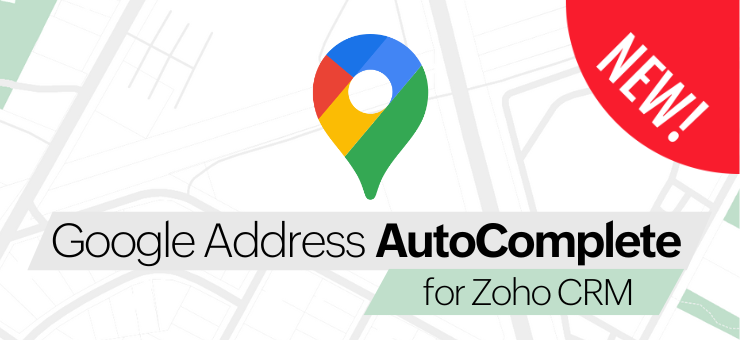Thinking about getting started with Zoho Desk but unsure where to begin? You’re not alone. Zoho Desk is a powerhouse for managing customer support, but its flexibility can be overwhelming when you’re setting things up for the first time. That’s why we thought we would simplify how to set up Zoho Desk for you.
This guide will walk you through exactly how to set up Zoho Desk from scratch, using the same 7-step framework we follow at Zenatta for our clients. Whether you’re handling tickets solo or setting up a full-fledged support team, these steps will get you started on solid footing.
1. Set Up Departments, Roles & Hierarchy
Before anything else, you’ll want to mirror your organizational structure inside Zoho Desk. That starts with setting up departments, roles, and profiles.

Departments
- Each department is isolated in terms of workflows, users, ticket views, and custom fields.
- Think of departments like “Customer Support,” “Billing,” or “Returns.”
- Navigate to Settings > Departments to add a new one.
- Assign agents and decide if this department should be visible in your Help Center.
Roles
- Roles control data visibility.
- Your org chart should loosely match your role structure—e.g., CEO > Manager > Agent.
- Managers can view the data of those reporting to them, but not vice versa.
Profiles

- Profiles control what users can do with the data they can see.
- Set permissions for create, view, update, and delete actions.
- Pro tip: start with minimal permissions and expand them only when needed.
This foundational setup helps avoid data chaos and keeps your team organized.
2. Route Emails & Communications into Zoho Desk
Once departments are in place, it’s time to make sure tickets land where they should.
Step-by-step:
- Go to Channels > Email.
- Copy the default Zoho-generated email for the department.
- Set up email forwarding from your existing support email (e.g., support@yourcompany.com) to the Zoho email.
- Add your support address under From Address Settings so responses come from a familiar domain.
- Set up DKIM authentication to ensure email deliverability and brand trust.
With this setup, emails convert to tickets, and agents can reply from your branded address, not a @zohodesk.com domain.
3. Manage and Customize Notifications
Zoho Desk comes with a bunch of notifications turned on by default. That’s great—until it’s not.
Types of Notifications:
- Contact Notifications (for your customers)
- Agent Notifications (for your support staff)
- Team and Department Notifications
Visit Settings > Customization > Notifications to:
- Turn off any unnecessary alerts
- Customize email templates with your logo, branding, and tone of voice
- Add SMS alerts if you’re using an SMS integration

You probably don’t need a notification for every reply. Aim for just enough automation to keep everyone in the loop without overwhelming inboxes.
4. Customize Fields for Tickets, Contacts & Accounts
Want to track things like service level, device type, or time estimate? Custom fields are your best friend.
Where to Go:
- Settings > Customization > Layouts and Fields
Choose your department, then select the module you want to customize (Tickets, Contacts, or Accounts). You can:
- Drag and drop field types like single-line text, picklists, dates, or decimals
- Set fields as required, read-only, or encrypted
- Decide if end-users can see or edit fields in the Help Center
Example: If your team logs estimated work hours, you might add a decimal field called “Work Hours Estimate” that’s read-only for clients.
5. Set Up Workflows to Automate Support
Automation is where Zoho Desk shines. Workflows let you trigger actions based on ticket events.

Basic Workflow Use Cases:
- Change ticket status when an agent replies
- Send alerts when tickets are assigned
- Auto-tag tickets based on keywords
- Update fields when a form is submitted
Go to Settings > Automation > Workflows to get started.
For example, you might build a rule: “When an agent replies to a ticket, set the status to ‘On Hold’.” These basic if-then rules are super powerful and easy to scale.
6. Launch Your Help Center & Knowledge Base
Why answer the same question 20 times when your knowledge base can do it for you?
Dual Purpose:
- Self-serve support for your customers
- Agent assistance while replying to tickets
Under Help Center settings, you can:
- Enable customer signups
- Use your own custom domain
- Choose from available templates to style your Help Center
Then, head to the Knowledge Base tab to:
- Add categories, sections, and articles
- Suggest related articles in ticket views
- Embed knowledge directly into ticket responses
It might not be ultra-customizable, but it’s highly functional. Start simple with FAQs and expand from there.
7. Integrate with Zoho CRM (But Do It Right)
This is hands-down the most common integration, and the most common place folks make mistakes.
Our Advice: Avoid two-way sync.
Why?
- Spammers will email you. That creates junk contacts in Desk.
- With two-way sync, those junk contacts spill over into CRM.
Best Practice:
- Use a one-way sync from CRM → Desk
- Map only the fields you need (Name, Email, Account, etc.)
Once it’s set up, you’ll be able to:
- View CRM info directly inside Desk tickets
- Jump into CRM from within a ticket
- See deals, notes, activities, and contact info at a glance
It creates a seamless experience without polluting your CRM with garbage data.
FAQs
Yes! Use Zoho SalesIQ or connect a third-party chat tool.
Absolutely. Under Channels, you can integrate Facebook, Twitter, and Instagram.
Yes, you can define SLAs under Automation > SLAs to ensure timely responses.
Yes, use Roles and set them to not share data with peers.
Conclusion
And there you have it—the 7 essential steps for how to set up Zoho Desk the right way.
From roles to workflows to CRM integration, getting these basics right sets the foundation for a smoother, more efficient support process. Of course, every business is different, and once you get rolling, you may need advanced automations, time tracking, or even support plan segmentation.
Need help or looking for a more custom solution? Click here to book a free consultation with us.





